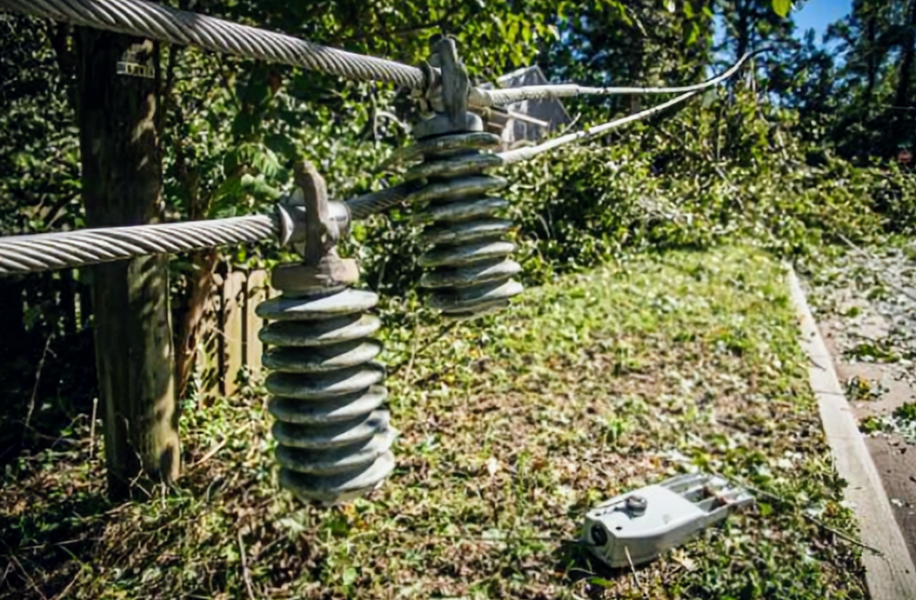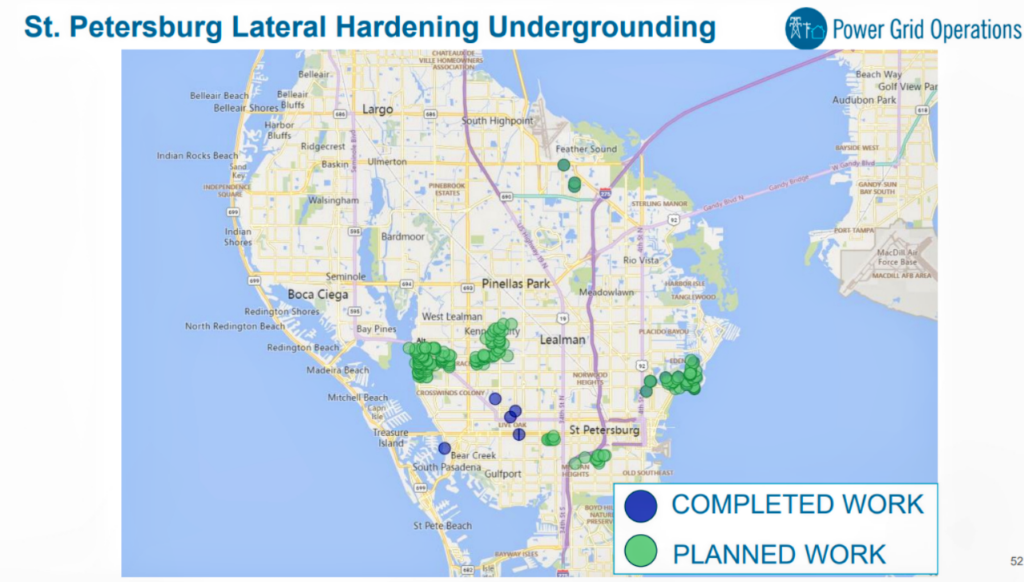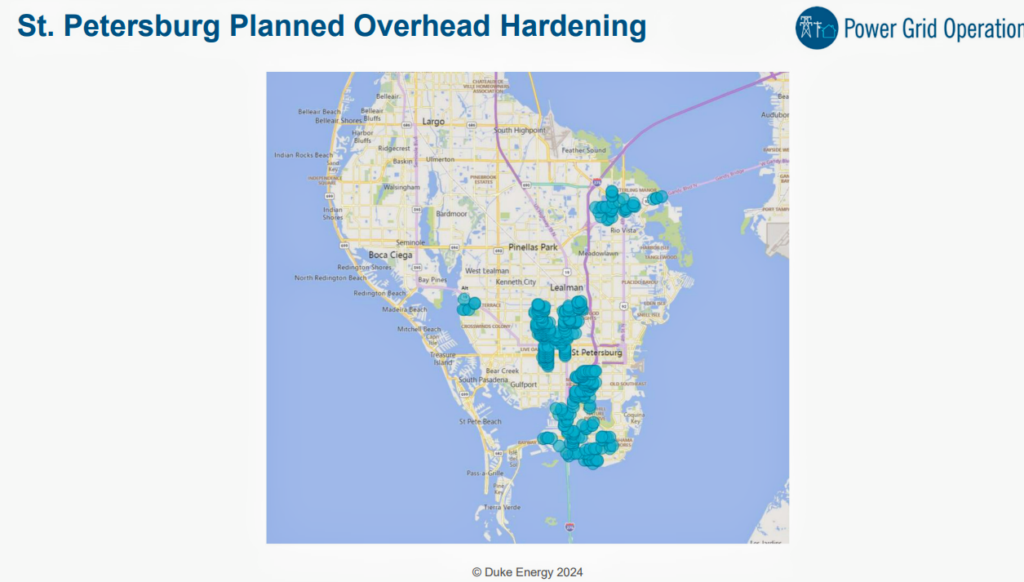Thrive
Duke’s storm hardening efforts include burying more lines

Roughly 26,000 additional Duke Energy Florida customers in St. Petersburg will receive electricity from more environmentally resilient underground lines by 2027.
Duke officials are focusing their storm hardening efforts on laterals – the smaller lines that connect to residences. Brian Lloyd, general manager of distribution projects and engineering, said those are typically the most susceptible to extreme weather.
Lloyd provided city council members an update on the St. Petersburg-based utility’s Storm Protection Plan at a Sept. 19 Committee of the Whole meeting. The presentation was one of several in the over four-hour discussion regarding environmental resiliency efforts.
“We are trying to strike a balance between which lines we target for underground and which lines we target for overhead hardening,” Lloyd said. “We take the ones we believe are most likely to have outages during hurricanes and target those for going underground.”

A graphic showing where Duke will install underground lines that connect to homes.
Duke operates nearly 1,500 miles of primary overhead and underground (35%) lines. Lloyd said the company would bury 50% and storm-harden the other half.
He added that the transition should “greatly reduce” storm damage, outages and customer costs. However, Lloyd noted the pros and cons of burying lines.
He explained that floodwaters and storm surges can impact underground systems. Electrical grid issues away from buried laterals can also cause disruptions for those customers.
“When that outage does occur, it can be more timely to respond and restore the service,” Lloyd said. “Overhead lines are easy to see – you know where the damage is. For an underground line, that’s a lot more difficult.”
In addition to troubleshooting and repair hurdles, Lloyd said burying lines is labor-intensive and intrusive for customers. Residents must provide easements that allow Duke to “touch the side of their house.”
Despite those challenges, burying infrastructure increases environmental resiliency. It also eliminates the need for unsightly poles and trimming neighborhood trees.
Lloyd said overhead storm hardening includes installing larger, more resilient poles with modernized conductor systems. “If the city is interested, these are areas that we could partner to go underground rather than overheard, as long as we talk about that before we actually start construction.”
Duke has completed four undergrounding projects since 2022. Lloyd noted that Duke replaced 6.08 miles of overhead lines with 48.27 miles of buried wiring.
“When you see a mile of overhead line, it’s not as easy as putting a mile of underground conductor,” he explained. “When we go back to rebuild these systems underground, we do a … loop system, so there’s an in and out for redundancy.
“It does increase the overall scale of the project.”

A graphic showing where Duke plans to storm-harden overhead lines.
Replacing 46.27 miles of overhead lines with 370.6 miles of buried conduit through 2027 will increase the percentage of local customers receiving underground electricity from 35% to 40%. Duke is now discerning additional target areas for what Lloyd said is a 30-year initiative.
He told the council that those projects present an opportunity to install new stormwater piping. Most planned undergrounding initiatives encompass West St. Pete neighborhoods, like Jungle Terrace, and the city’s eastern coastal areas around Shore Acres.
Councilmember Brandi Gabbard asked how Duke’s plans would affect electric rates. She noted customers have seen several substantial spikes over the past three years.
Jeff Baker, community relations manager for Duke, said the company’s two million statewide customers equally split storm hardening costs. He also blamed recent increases on natural gas prices.
“Utility rate making is very complex; you have certain parts going up, certain parts going down,” Baker added. “Based on our most recent settlement with the Public Services Commission, we will have an additional rate decrease Jan. 1, 2025.”
He said the average customer using 1,000 kilowatts of electricity would see a $27 year-over-year decrease on their monthly statements. “In that year’s timeframe, we’ll have reduced bills three times.”
Councilmember Lissett Hanewicz noted that some leftover poles from previously overhead lines have remained in neighborhoods long after the state-mandated six-month window for removal. Baker said communication utilities share that infrastructure and delay the process.
“I’ve heard it from all areas of the city,” he said. “We have certainly elevated it to our legal counsel.”







